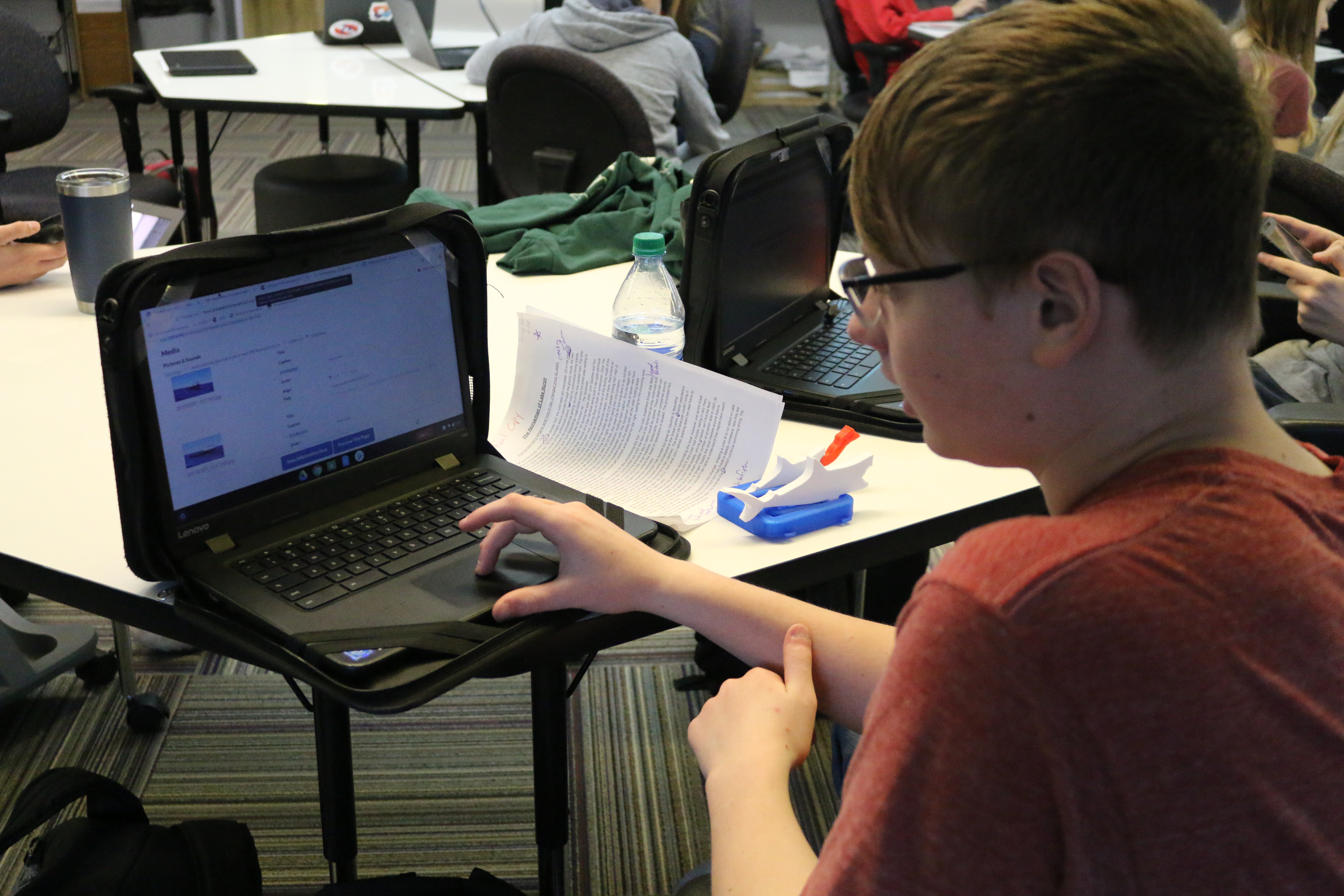Science in the Sanctuary students capture local fisheries heritage stories
Alpena High School students uncover, share local knowledge and stories about how Lake Huron fisheries have shaped northern Michigan communities.

Northern Lake Huron communities and Great Lakes fishing have always been inextricably intertwined. Yet, the very people and stories that shape this local fisheries history and heritage can just as easily be lost to time – especially when the knowledge, experiences, or pivotal events are found only in an image in a family photo album, a newspaper clipping filed long ago, a book on the back shelf in a library, or an event remembered only in a fisherman’s or woman’s memory. Through research and interviews, Alpena High School students are uncovering local knowledge about how Lake Huron fisheries have shaped our community.
Sharing the stories
These students are bringing to life and sharing some of these pivotal people, places, and experiences through trail stories published on the Great Lakes Fisheries Heritage Trail website. The students have tackled this project as part of their school’s Science in the Sanctuary course, a blended science and language course centered on project-based learning. The school and educator team, these student leaders and their community partners coordinated through the Northeast Michigan Great Lakes Stewardship Initiative (a regional place-based education network) with support from a recent Great Lakes NOAA BWET project supporting students engaged in fisheries studies and stewardship. They also worked collaboratively with Michigan Sea Grant, Michigan State University Extension, Besser Museum for Northeast Michigan, NOAA Thunder Bay National Marine Sanctuary, Alpena Convention and Visitors Bureau, and other local Great Lakes Fisheries Heritage Trail network partners.
It has been an adventurous year for the Alpena students involved in the course. This innovative place-based education class engages students – through their science and language learning – in Great Lakes-focused projects in (and with) their local community. This project has resulted in amazing learning opportunities and experiences, along with many valued community benefits for the partners working alongside these students. In class, students learned about Great Lakes science and ecology, including key ecosystem issues like invasive species, while conducting their own independent research. They learned from visiting experts and community members connected with the Lake Huron fishery, but they also visited science and museum centers like the NOAA Thunder Bay National Marine Sanctuary (including a glass-bottom boat tour on Lake Huron) and the Besser Museum for Northeast Michigan.
Interviews and research
Students explored a variety of prospective leads for their fisheries heritage investigations, and reached out into the community to conduct interviews with fisheries stakeholders and local experts. They interviewed charter boat captains, fishing festival organizers (and anglers), and other community members (sometimes family members) who fish these local waters. They spoke with several Native American and commercial fishing families that fish in northern Lake Huron - both past and present – learning about their family business operations, vessels and gear, markets where fish are sold, and some of the ecological and economic challenges facing their industry. Others visited with local museums in relation to their fisheries heritage exhibits, as well as local authors who have lived, researched, and written about local Lake Huron fisheries. Several museums have historic fishing vessels on display and vessels also lay on the bottom of Lake Huron as part of the NOAA Thunder Bay National Marine Sanctuary, and some students spoke with a state maritime archeologist to gather histories on these vessels.
Resulting from their research and interviews? A treasure trove of knowledge, informational resources, and some amazing stories. This team of students tackled a variety of leads and developed their stories, many of which are now published online and available through the Great Lakes Fisheries Heritage Trail website. Today these stories are more widely available to you – and a wider public – because of the investment and dedicated work toward this Science in the Sanctuary community project.
Michigan Sea Grant helps to foster economic growth and protect Michigan’s coastal, Great Lakes resources through education, research and outreach. A collaborative effort of the University of Michigan and Michigan State University and its MSU Extension, Michigan Sea Grant is part of the NOAA-National Sea Grant network of 33 university-based programs.
This article was prepared by Extension educator Brandon Schroeder under award NA14OAR4170070 from the National Oceanic and Atmospheric Administration, U.S. Department of Commerce through the Regents of the University of Michigan. The statements, findings, conclusions, and recommendations are those of the author(s) and do not necessarily reflect the views of the National Oceanic and Atmospheric Administration, the Department of Commerce, or the Regents of the University of Michigan.



 Print
Print Email
Email


